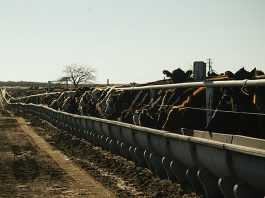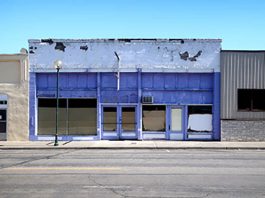 I often hear from people operating on a smaller scale that their limitations of size make it impossible for them to be profitable. “I only run 12 cows and operate on 30 acres. I can’t possibly be profitable!” The limitations to profitability are usually self-induced. When we look inside this operation what we will likely find is that they are ranching entirely on owned land, choosing to run 12 head of breeding cows and wanting to own all the stuff a typical rancher would own. No wonder this operator feels like they can’t be profitable. Here are some considerations for those choosing to operate a smaller scale ranching business:
I often hear from people operating on a smaller scale that their limitations of size make it impossible for them to be profitable. “I only run 12 cows and operate on 30 acres. I can’t possibly be profitable!” The limitations to profitability are usually self-induced. When we look inside this operation what we will likely find is that they are ranching entirely on owned land, choosing to run 12 head of breeding cows and wanting to own all the stuff a typical rancher would own. No wonder this operator feels like they can’t be profitable. Here are some considerations for those choosing to operate a smaller scale ranching business:
Cows are a rich-man’s hobby
If you are going to choose to run cows, keep in mind that your competition will be every doctor, lawyer, accountant or other independently wealthy person who just enjoys running cows. They don’t have a profit motive and are willing to sell at a loss because they enjoy running cows. They are likely selling into the same market you are. On a long-run analysis, owned cows are usually the least profitable enterprise to run. Of course, there are always exceptions, but unless you have an unusual competitive advantage, you might reconsider cows as the enterprise of choice. Cows consume an enormous amount of feed per dollar of revenue and usually lend themselves to one marketable product a year (weaned calf). Also taking into consideration the bulls, heifers and other support enterprises that most choose to have on hand when running cows and you’ve got yourself a hot mess. If grazed forage is your limiting resource, cows are likely not the right choice.
Good grazing
Running smaller groups of animals makes it difficult to practice good grazing management. The extremely small pasture size needed to get any meaningful herd effect or high stock densities often isn’t practical. If land scale is the limiting factor, look for enterprises that are seasonal and can double or triple the number of animals for a shorter period of time allowing for better grazing in a more practical way. For example short season cows, stockers, custom grazing or other enterprises that can be run for 3-6 months instead of 12 months
High value enterprises at scale
Many small-scale producers have a direct market or some type of value add. How can you scale that part of your business? For example, let’s examine the producer who is selling beef direct and owns the animal from conception to consumption. When we break this apart the real value add is likely the 900 lb. animal becoming a finished animal and then the marketing of the meat. If the place didn’t have cows and they sourced 900 lb. yearlings from another ranch who’s practices fit their story, they could do 5 times the number of animals. Maybe this example doesn’t fit your model, but the principle is to identify the 1, 2 or 3 enterprises you are doing that are creating good margins, and scale those parts of your business.
Poultry and small ruminants
From a gross margin per acre basis pastured poultry are hard to beat. However, the same rules of economics apply. Keep overheads low, margins/unit high and crank the turnover.
Kathy has experience with high inputs lowering profit potential on a poultry enterprise. Your cost of production has to be less than $40/chicken dinner.
Small ruminants can be a competitive advantage. Providing grazing services can open doors, but often presents other challenges like fencing or predators. If small ruminants appeal to you, consider ramping up to a scale that a labor unit can be supported. Running 50 sheep or goats is a distraction. Running 800-1200 is a job for a labor unit that should produce profit for the owner.
Eliminate the stuff
Turning sunlight into grass and converting that to something marketable shouldn’t take a lot of expensive stuff. There is always a long list of new shiny thing-a-ma-bobs that would be fun to own, but few of those thing-a-ma-bobs put money in your pocket. If you’re ranching on a small scale then you likely don’t have the numbers to justify the depreciation and repairs costs. Take for example a pickup. A 5-year-old pickup is still $50,000. At 20% of present value for annual repairs, depreciation and interest that is $10,000 annual cost to own this pickup. If we follow the guideline of $50/cow to service machinery overheads then it takes 200 cows just to cover the pickup. Add tractors, skid steers, side-by-sides etc. and now you have the typical ranch that is underwater in too many overheads.
 Mindset
Mindset
All limitations are self-imposed. If you keep telling yourself you can’t be profitable because of your scale then you will allow yourself to use that as an excuse. What will it take to build the ag business you want to meet your profit target? What is the next thing you need to do to move toward that goal?
While at the Texas Chapter of Executive Link, I asked the EL members to share their advice for someone ranching on a small scale and wanting to do it profitably. Here is their advice.
I’d love to hear from those of you running smaller-scale ag businesses. What is your competitive advantage, how did you develop it? What would you add to my list? Which of my suggestions would you challenge?





RE: “Running smaller groups of animals makes it difficult to practice good grazing management.” If you are retired, it’s not so hard, in my experience.
We custom rotational graze cow/calf on a legume/grass mix. Cattle owner wants to bring ~#500 calves next spring. That should increase profitability as per unit/day price will be the same.
Comments are closed.